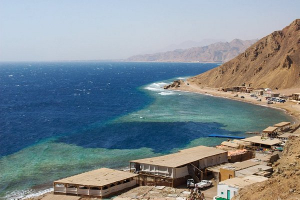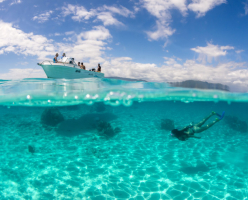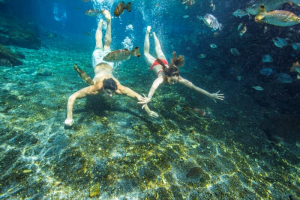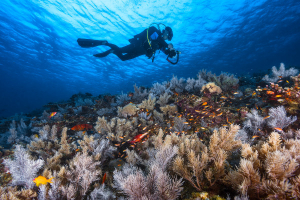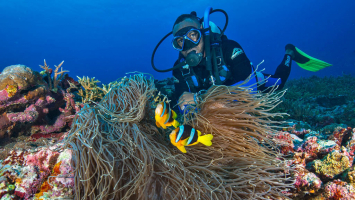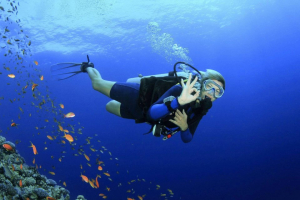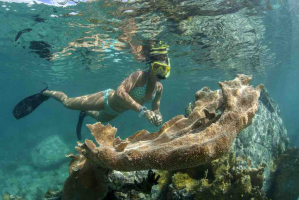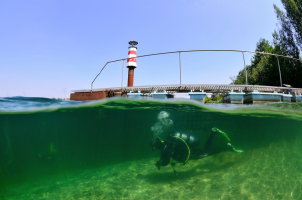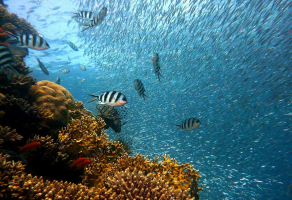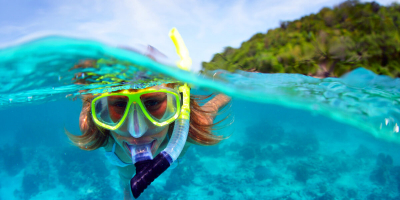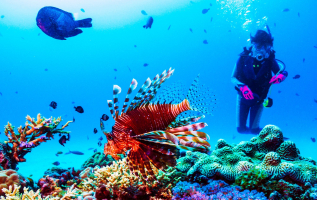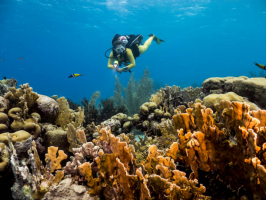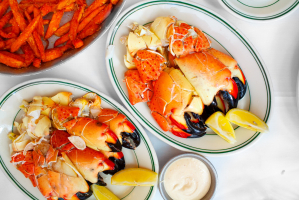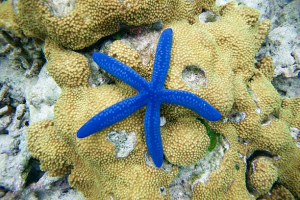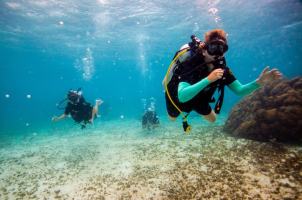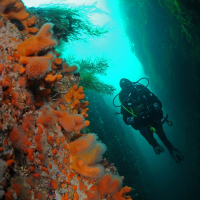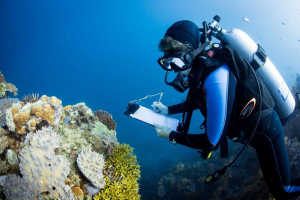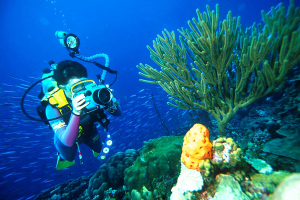Top 7 Best Places for Scuba Diving in French Polynesia
When it comes to diving in French Polynesia, there are some givens you can expect no matter which island you pick. Expect warm water (over 80 degrees F is the ... read more...norm), great visibility (100 feet or more in some areas), and healthy populations of wildlife ranging from sharks to schooling neon-colored parrotfish. Here are top 9 best places for scuba diving in French Polynesia.
-
The Tiki Point dive location on Moorea's northwest side is one of the best places for scuba diving in French Polynesia. Why is it the most effective? Due to its crystal clear waters and plentiful and intriguing marine life, Tiki Point is a world-famous dive location! Sharks and fish such as black tip reef sharks, grey reef sharks, and lemon sharks can be found here! This is frequently an excellent place to go whale or dolphin viewing!
To begin with, it offers excellent visibility—on a bad day, you might only be able to see 70 feet, but on a good day, you can see well over 140 feet or more. Sharks are particularly easy to spot because they're frequently at the surface, waiting to welcome divers as they dive in. You might glimpse dolphins or whales on the surface during the short boat ride to the destination. Lemon sharks, grey reef sharks, blacktip sharks, and whitetip sharks are all potential sightings at Tiki Point. Larger schools of fish or sea turtles may come in to grab the microscopic plankton carried by the current if you dive on a day with a slight current.
Dive Type: Boat dive
Closest Departure Point: Tuahura, Moorea
Depth: 55 to 75 feet
Certification Required: Open water
Location: Moorea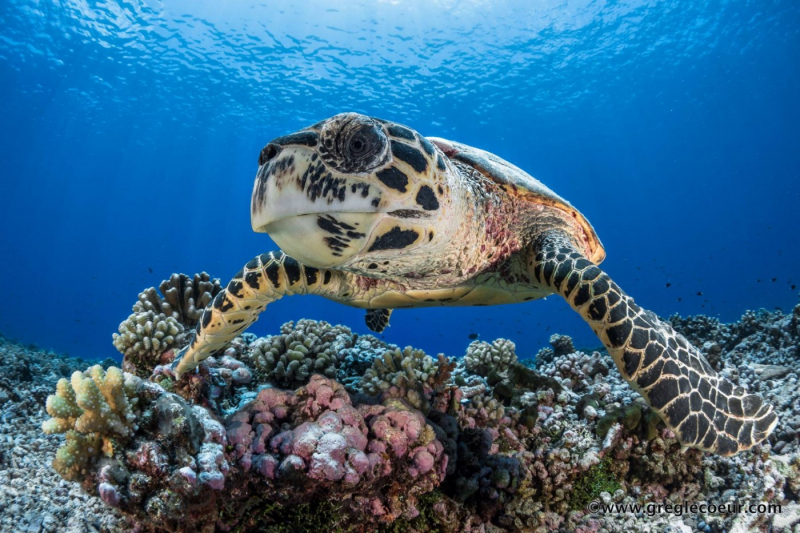
tribloo.com 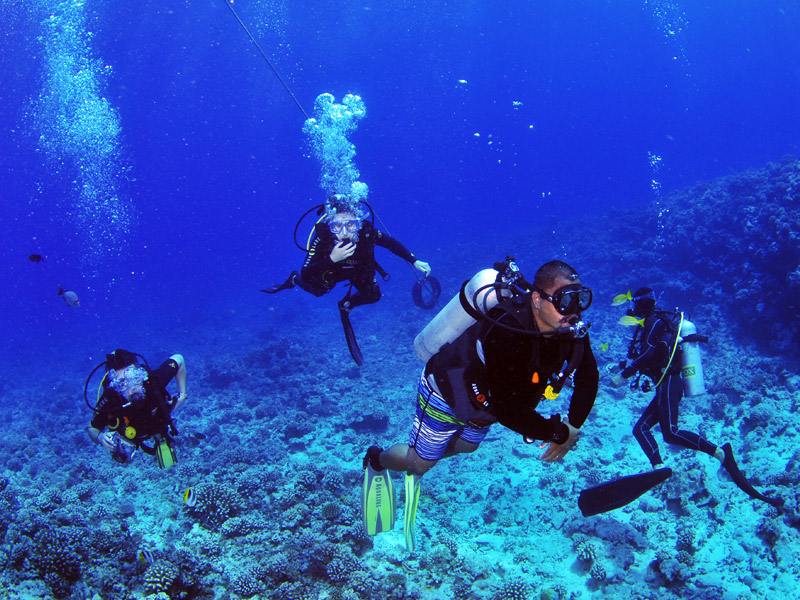
topdive.com -
The Spring is ranked second on the list of best places for scuba diving in French Polynesia. The spring, which is located at a depth of 5 meters and produces columns of water bubbles to the surface, is named for it. The springs are surrounded by spectacular underwater valleys that supply a variety of marine life, including turtles and humpback fish, and run parallel to the coast. Although the name "Tahiti" is often used to refer to all of French Polynesia, it actually refers to only one island. Fortunately, it is the only island in the country with an international airport, so all visitors will stop by. That means divers should go below the surface at least once while they're there.
The Spring, named after the freshwater bubbles that regularly bubble over the reef from an underwater reservoir, is one of the most exciting diving locations for newcomers. As if swimming through a bubble wasn't cool enough, divers may frequently observe six or more sea turtles due to the site's proximity to the "Turtles Flat" dive site (or "Turtle City"). This is an excellent site for first-time snorkelers or people who haven't been in the water in a while because of the shallow reefs and small currents.
Dive Type: Boat dive
Closest Departure Point: Puna'auia, Tahiti
Depth: 50 to 100 feet
Certification Required: Open waterLocation: Tahiti
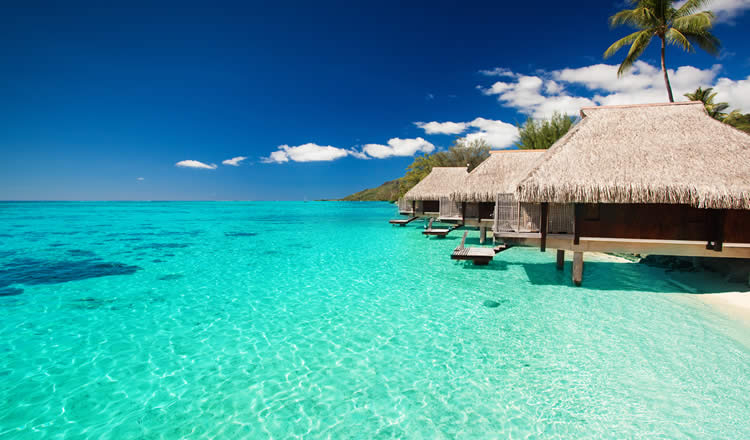
allcruisehotels.com 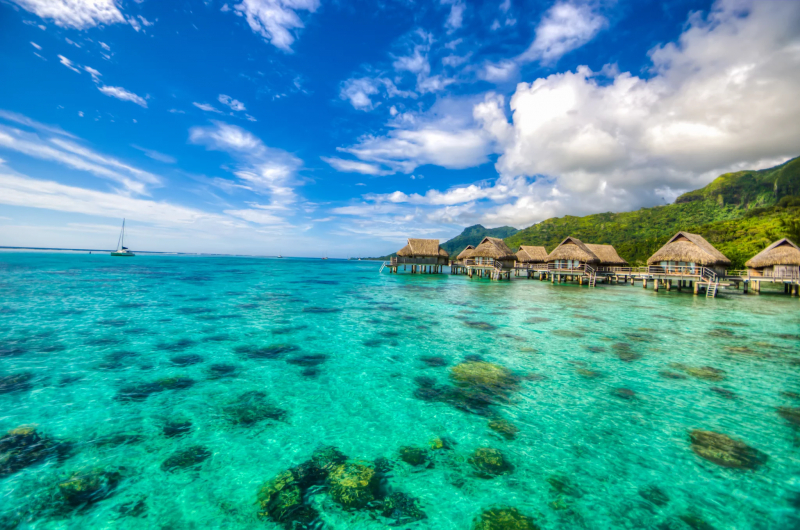
popsugar.com -
Diving in the Marquesas is a more adventurous experience than diving on most other islands. It's a once-in-a-lifetime dive for individuals who want to descend beneath the surface in some of the world's most remote locations. Hiva Oa, a Marquesan island that was formerly home to French fauvist Paul Gauguin, is one of the few spots in the Marquesas where you can dive, but it's a fantastic spot. Under the water, the rocky island appears to be the same as it does above, with steep walls descending into the sea.
Although the water is a touch colder and visibility isn't as good as it is in Tahiti or Moorea, divers who don't mind some currents and swells are likely to see sharks, huge eagle, and marble rays. When not moving, the latter has evolved to blend in with the stony ocean floor, making it nearly impossible to identify.
Dive Type: Boat dive
Closest Departure Point: Atuona, Hiva Oa
Depth: 50 to 100 feet
Certification Required: Open water, though currents and downswells can be strong
Location: Tahuata, Hiva Oa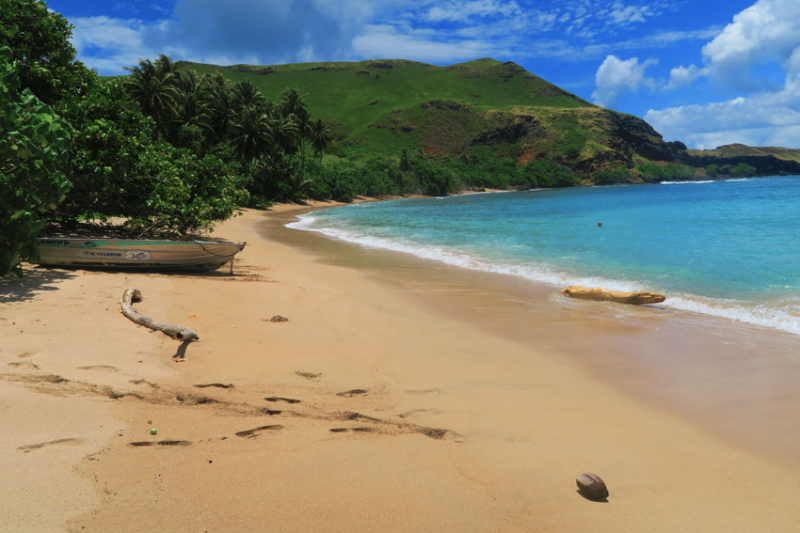
xdaysiny.com 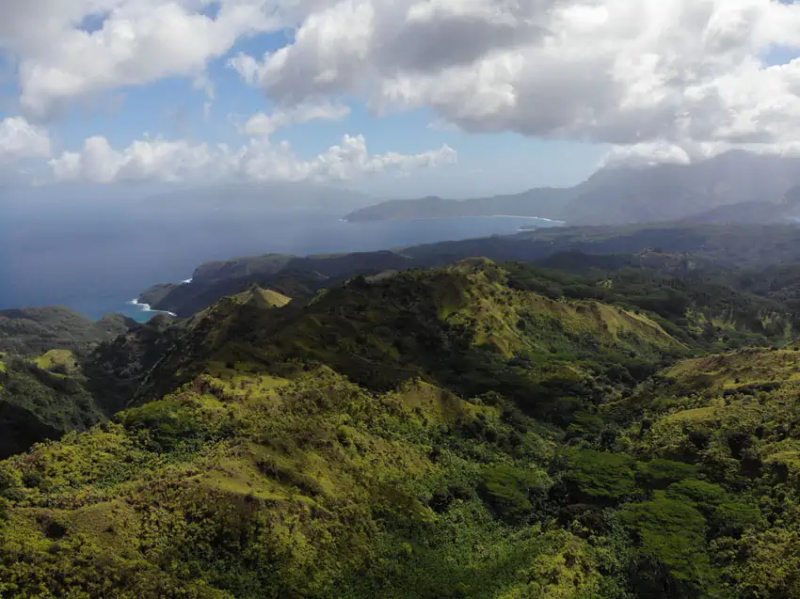
xdaysiny.com -
If you've ever fantasized of swimming with manta rays, Anau is the place to go. Snorkelers can see the rays up to 80 feet (25 meters) below the surface on a clear day, while divers can get a closer look. While the rays are the main draw, the two coral reefs here are home to a diverse range of sea life, including colorful corals, turtles, black-tip sharks, moray eels, and other species.
While ray sightings aren't certain, because Anau is a cleaning station, they're fairly prevalent. Any location where small fish and crustaceans consume parasites and, for lack of a better term, ocean crumbs that collect on the bodies of mantas is referred to as an underwater "cleaning station." These stations are usually shallow, and mantas use them on a daily basis because they know cleaner fish like parrotfish and wrasse will be there. Book this dive two mornings in a row to increase your chances of encountering mantas, as it is closed to divers in the afternoon.
Dive Type: Boat dive
Closest Departure Point: Motu Piti A'au (near the Intercontinental Bora Bora)
Depth: 30 to 80 feet
Certification Required: Open water
Location: Bora Bora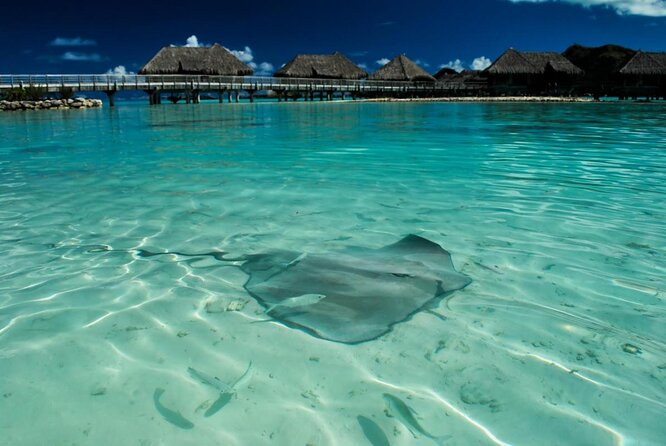
hrs.com 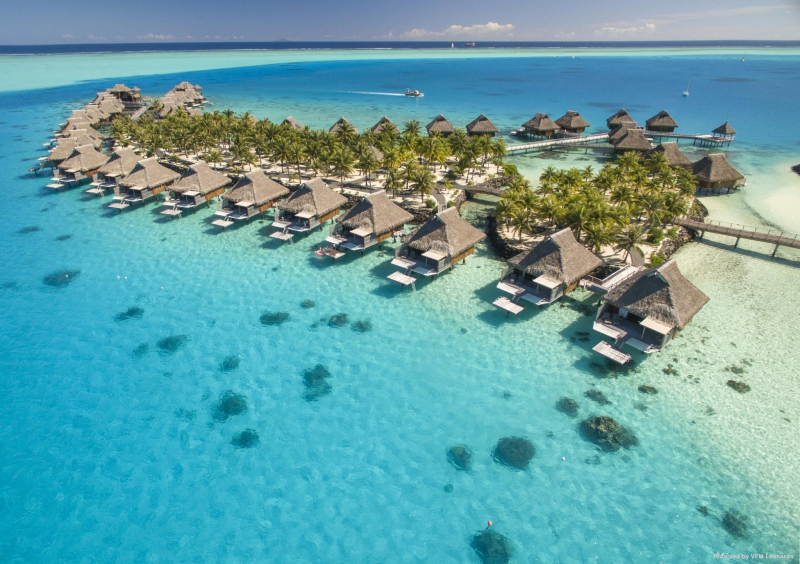
hrs.com -
Do you like sharks? Then there's Garaue Pass in French Polynesia, which is known for the "wall of sharks" that patrol the reefs immediately outside the pass. Divers will typically descend quickly, sitting on the ocean's bottom as sharks swim just beyond 70 to 90 feet deep. Before starting the ascent, you'll stay for 10 or 15 minutes to view the sharks.
Because of the high currents, divers must have prior experience diving in currents, despite the depth being between 15 and 22 meters. What you see at this diving site is usually a surprise, and large pelagics like the famed Raira can appear at any time (grey reef shark). In the Ali Baba Canyon, shielded from the tide, schools of fish congregate, making for an interesting and colorful dive! You'll probably need to cling to rocks because fighting the strong currents will exhaust you and deplete your oxygen supply quickly. This spot is normally only suggested for advanced divers due to the unpredictable currents, the possibility of large shark sightings (tiger sharks if you're lucky), and the depth.
Dive Type: Boat dive
Closest Departure Point: Rotoava, Fakarava Atoll
Depth: 70 feet
Certification Required: Advanced open water
Location: Fakarava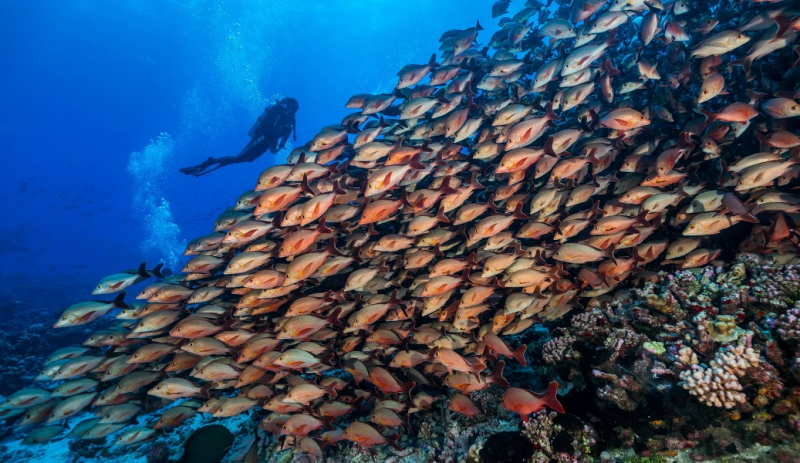
topdive.com 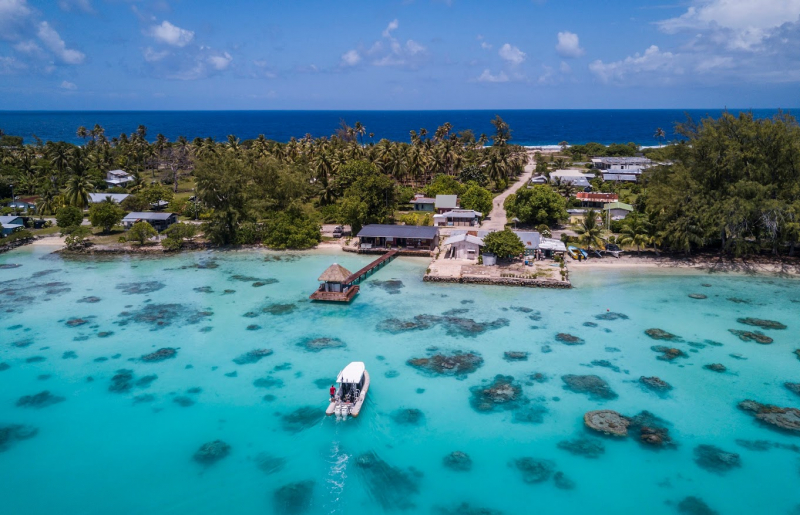
topdive.com -
The canyons ranks 6th on the list of best places to scuba diving in French Polynesia. It connects the settlements of Tiputa and Avatoru, which are Rangiroa's primary inhabited districts. On both sides of the pass, two vistas have been established that are well worth the detour when the current is outgoing: dolphins jump and play in the waves just a few tens of meters from the shore. Not a big fan of sharks? Then go to Rangiroa, where you'll have a better chance of seeing a different extra-large species: dolphins. Both entering and outgoing currents flow through the pass, causing irregular waves on the surface. Bottlenose dolphins enjoy jumping and playing in the waves, and divers are likely to see them while diving. They're interested and sociable, and they'll frequently approach you to say hi.
There are various unique dive locations in the pass, but the direction and speed of the current will usually dictate which one you visit. Divers of all levels have the opportunity to swim with dolphins because they normally stay near the reef, where currents are mild. If you want to snorkel the pass, you can choose from a number of trip operators on the atoll. The cost of a 2-hour tour is between 30 and 40 euros per person. Check with your hotel or guesthouse to see if they can make the reservation for you.
Dive Type: Boat dive
Closest Departure Point: Rotoava, Fakarava Atoll
Depth: 50+ feet
Certification Required: Open water
Location: Rangiroa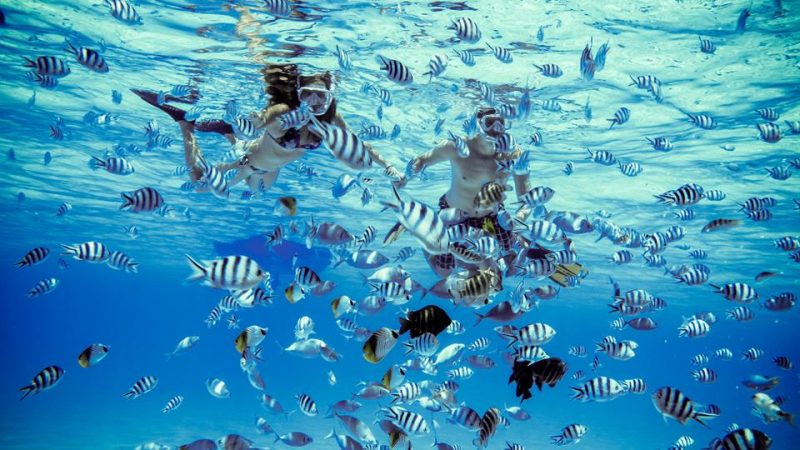
tahititravelmate.com 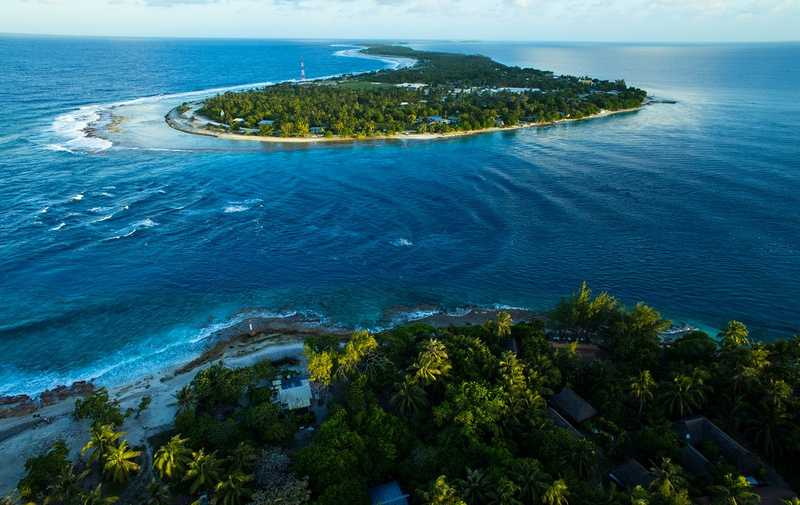
spotmydive.com -
The Canyons ranks 7th on the list of best places for scuba diving in French Polynesia. The site is near Tetiaroa, outside the lagoon on the south side of the atoll, just a few minutes' boat ride from the famed The Brando hotel. Countless types of fish, each more vibrant than the next, whirl in rhythm throughout the 20-meter trek around the reef. Butterfly fish, seahorse, stork fish, soldier fish, lionfish, and whitehead shark are also present.
Divers who aren't licensed or who are just getting started can still go diving in Tahiti. A cargo shipwreck and the remains of a Catalina amphibious aircraft are two sites inside the lagoon that are highly popular with beginner divers (flying boat). The cargo ship (La Goelette) was accidentally sunk in the 1960s after being stripped and purposefully sunk for divers and dives. Both sites have large doorways, no currents, and excellent views, so experienced divers should have no trouble accessing wrecks. This location is referred known as the "Aquarium" by some diving shops.
Dive Type: Boat dive
Closest Departure Point: Tetiaroa Atoll
Depth: 65 feet
Certification Required: Open water
Location: Tetiaroa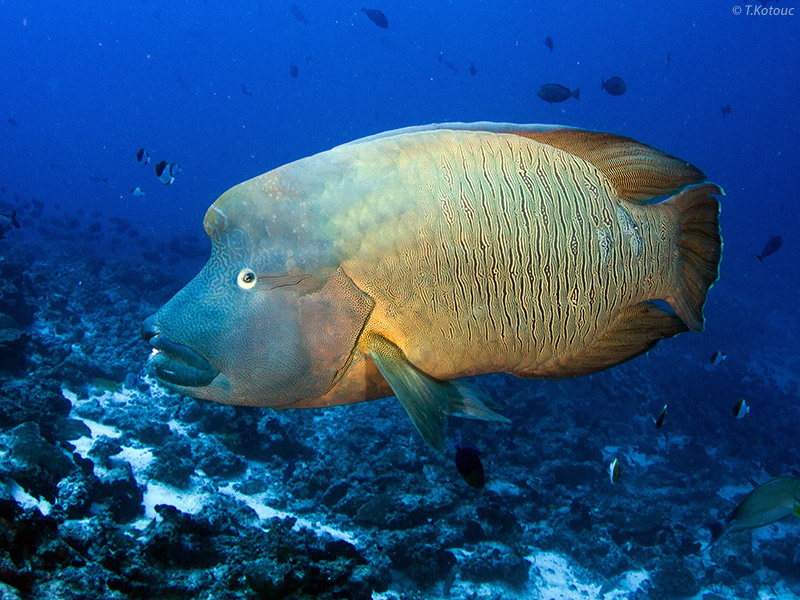
divetahitiblue.com 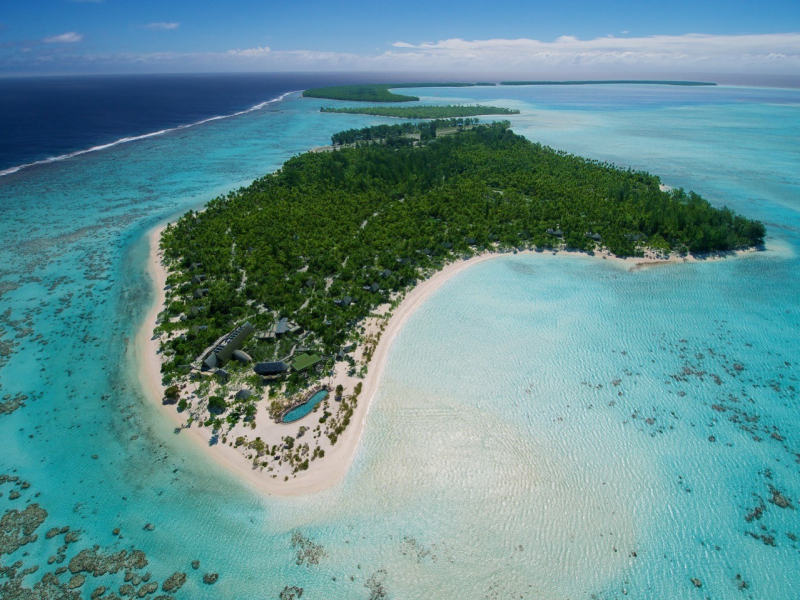
divetahitiblue.com









